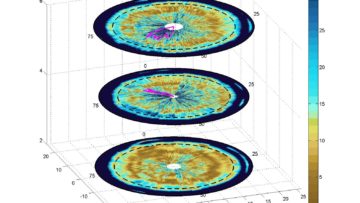Fulgham Tree Preservation can accurately map the root system of trees and scan trunks to analyze wood density with the TRU™ (Tree Radar Unit) system. This system provides a non-invasive method to view roots and the internal aspects of a tree trunk. This technology is exceedingly useful for various scenarios, from conducting Level 3 Risk Assessments to knowing where to build without damaging large amounts of roots, to generating historical data to compare to.If you have historically or botanically significant trees, yearly scans are recommended to maintain annual records on tree condition. As a baseline, we offer this service and a report as part of our site/tree assessment process.
History Of Ground Penetrating Radar
Originally GPR was developed for measuring thickness of glaciers in the 1930s, the hardware and software made tremendous technological advances in the 1960s and 1970s. Today GPR is used worldwide in a variety of endeavors and academic disciplines such as archeology, forensics, construction, and biomonitoring.
Ground Penetrating Radar Applications in Urban Forestry
Analyze wood density and illustrate predicted truck decay
The GPR and post-processing software produces predicted images of the root structure, location & depth.
Map and verify utility and hardscape conflicts with root systems. The roots can be detected and mapped under a wide variety of surfaces such as: turf, bare ground, concrete, asphalt, bricks, pavers, and buildings.
Used during planning and construction to identify location of roots to avoid future tree decline or removal.
To show a more accurate view of where tree protection zones (TPZ) should be established.
To pinpoint where root loss has occurred in declining trees.
Does not disturb soil or injured roots, which allows repeated measurements that reveal long-term root system development or decline.

February 6, 2023
Scanning Branches
Along with roots and trunks, our Ground Penetrating Radar has the capacity to do aerial scanning on the trees’ limbs....
Read Post
February 3, 2023
Trunk Scans
Ground penetrating radar (GPR) uses wave technology to non-invasively provide an image (radargram) of the internal structure...
Read Post
February 3, 2023
Excessive Moisture and Root Loss
One of the biggest factors that can cause stress in trees is water. Along the soil moisture spectrum, flooding and drought...
Read Post
February 1, 2023
Soil Compaction: The Root Killer
With our patented soil aeriation technology, our company is acutely aware of the dangers of soil compaction to roots....
Read PostWant to see some of the results? Click above!
